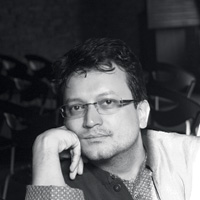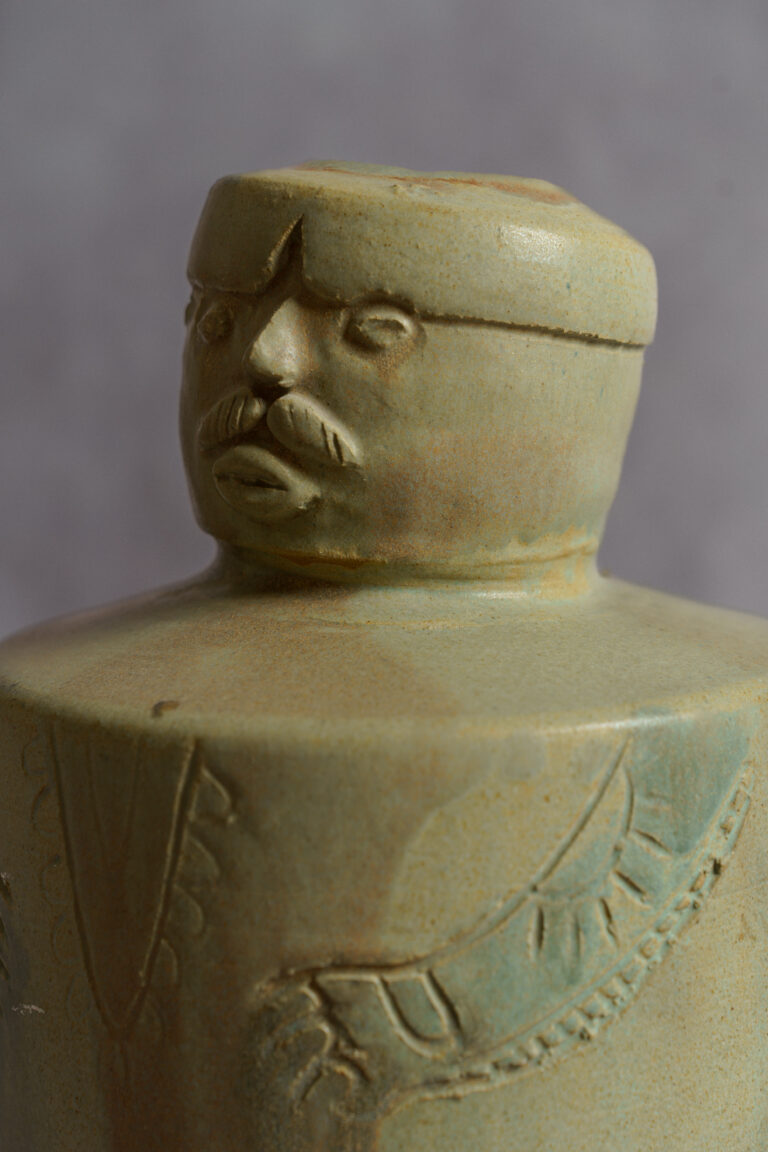
An icy, spectral light hovers above the sleeping roofs of factory sheds in Dayanita Singh’s Blue Book (2008/2009). It bestows, on the details it touches, a specificity that they lack as anonymous elements in the scaffolding of industrial modernity. Working against the chromatic silence of night-time, this light lends contour to coolant pipes, picks out ladders against a dark sky, emphasises towers, dwells on the rounded outline of concrete retorts, and underlines iron railings. Presented as an exhibition as well as published in an elegant missal-like edition by Steidl, Blue Book is a series of nocturnes staged in a wide array of warehouses and plants, industrial landscapes and factory interiors. Every image in this series is bathed in a colour that transits, in Singh’s lens, from jewel-like cobalt and veiled cyan through brooding Prussian and deep-welling turquoise to a dazzling, near-white cloudiness. Nuanced in degrees of shadow, twilight and gathering penumbra, Singh’s blue is held in subtle counterpoint by variable patterns of yellow pinpointed in rows of streetlamps, flaring from furnaces and sparking at windows.
This suite records Singh’s first sustained exploration of colour; she has long preferred to work with the demanding and enigmatic tonalities of black and white photography. Neither colour filters nor digital techniques are at work in the present images, which have been developed and printed from negatives in the classical manner. What we see is what Singh saw; or rather, what her daylight colour film registered after nightfall. Her decision to translate darkness through the medium of a single colour began with a chance discovery, while shooting in 2006, of the transitions that take place when daylight colour film is used in the dark: most colours melt away, yielding the spectrum to blue.

Architecture, isolated from and often overwhelming the landscape, dominates these photographs. The eye travels along ladders that link one roof to another; it pauses on flues and gantries, and traces staircases that wind around squat towers to end in the sky. These images put us in mind of Piranesi’s fantastic and visionary etchings, Carceri d’Invenzione (1745-1761), renditions of imaginary prisons, infernos with high-vaulted ceilings, leaping arches, blazing fires, and ladders and drawbridges lurching in mid-air. We are reminded, also, of Antonio Sant Elia’s dramatic Futurist ink and crayon studies for mechanised cities, hotels, train stations, airports and funicular lines (1913- 1914). And the recurrent images of fire in the night – from forges or furnaces set within architectural ensembles – prompt an intuitive association with similar tableaux in the 15th century phantasmagorias of Hieronymus Bosch. Significantly, though, while Bosch peopled his painted frames with bizarre denizens, part-human, part-animal and part-machine, Singh’s photographs in Blue Book are unpopulated.

Above all, this suite speaks to us of the shifting threshold between clarity and eclipse, approaching them not as binary opposites but as twins locked in a constantly changing ratio. The German word Dämmerung conveys this meaning more eloquently than the English ‘twilight’: the nocturnes collected to form Blue Book propose a portraiture of Dämmerung, which connotes the mutual dappling of light and dark but also, in more mythic register, is the time of the fall of gods, heroes and icons.
Singh is disinclined to annotate these photographs with the coordinates of their location, and indeed, they articulate topographies that are now globally available. Haryana, the Ruhr Valley, northern England, the Nordic countries, or the American Midwest could all have provided the settings for the Blue Book. Smokestacks overlooking lakes shimmering with moonlight or radiation; an empty ophthalmology clinic with its eye-test charts; high walls standing in theatres of vacancy, backdrops to vanished performances; buildings evacuated of the human presence: the polar, even selenic silences of these photographs mark an affinity with the catastrophe zones of Tarkovsky’s Stalker and Sacrifice, the abandoned space stations and bleak futuristic planet-scapes of Stanislaw Lem. These photographs also provoke recollections of Chernobyl and Bhopal, epic tragedies that ravaged communities and countries, poisoned the earth, the water and the sky. By an unobtrusive process of allusion and association, Blue Book draws us into a reflection on the dark and sinister aspects of industrial modernity.

What we see, in Singh’s lyrical and elegiac phrasing, is the twilight of the machines: the long fadeout of an economy premised on the ceaseless exploitation of the earth’s resources and the tireless processes of manufacture. A Blue Book is, conventionally, a register of value: a directory of socially prominent figures, a transcript of parliamentary discussions, or a manual listing of the value of used cars. Blue Book plays with all these meanings. It invites us, subtly, to consider the importance of this imposing industrial architecture; to assess what manner of debates concerning progress, the environment, employment and displacement might be conducted around these complexes; to ask what value resides in, or is retained by, this economic model. And yet, even as she prepares the ground for these politically loaded questions, Dayanita Singh wrings a plangent beauty from her material.















